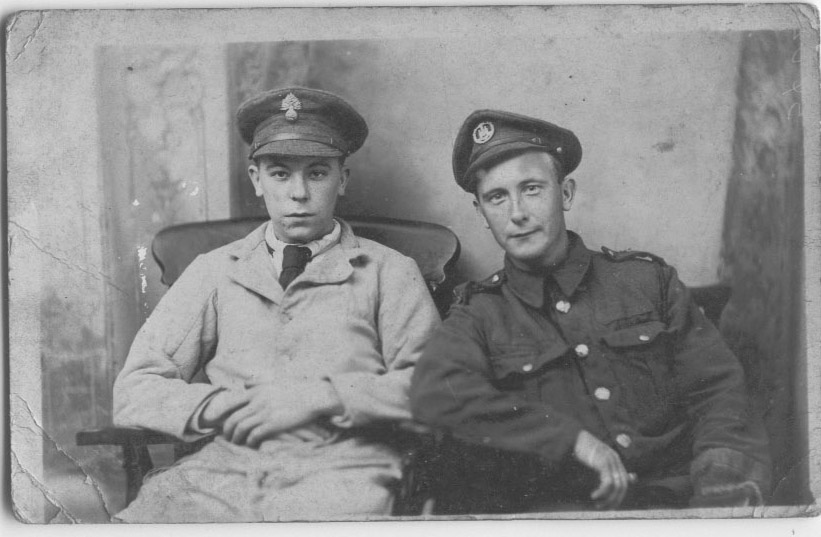W. H. White
Service no. 41697
Private, Leicestershire Regiment, 8th Battalion; formerly 11013, Royal West Surrey Regiment
Born in Stockwell; enlisted in Lambeth; lived in Stockwell
Killed in action on 27 May 1918, aged 19
CWGC: “Only son of William Henry and Matilda White, of 13, Mordaunt St., Stockwell, London.”
Remembered at Soissons Memorial, Aisne, France
Chris Burge writes:
William Henry White, a private in the Leicestershire Regiment, was Home (that is, in England) until 3 May 1916 when he sailed for Le Havre. The records show that he returned to London on 22 August 1916 and was admitted to the 3rd London General Hospital at Wandsworth, where he was treated for trench fever. This disease (variously known as Wolhynia fever, shin bone fever, quintan fever, five-day fever) is caused by an organism transmitted by body lice, and conditions at the front were ideal for its spread.
Soldiers serving on the front line lived in squalid, damp and cold conditions. In the fire trench – that is the foremost of three zig-zag trenches, the others being the support trench and the reserve trench – soldiers frequently lived amongst corpses and body parts, and faeces. These were ideal conditions for rats (they were said to have been as big as cats) and flies, for transmitting dysentery, and lice. In the freezing conditions (only the hottest summer days produced balmy nights), men huddled together for warmth, and thereby enabled the lice to pass from one human host to another.
Even when not in the fire trench the men stayed close to one another for they were not allowed to light fires. These would attract shellfire from the enemy or, later in the war, fire from enemy aircraft.
Soldiers did not stay indefinitely in these conditions: generally, four days’ service in the fire trench was followed by four in the support trench and eight in the reserve. The rest of the month was spent ‘in rest’ during which they performed other services, such as supplying the trenches with rations, water and ammunition. Opportunities for bathing and washing clothes were limited – the aim was to take a bath every 10 days but this was not always possible.
Lice infested the seams of the soldiers’ uniforms. To kill them required heat – either hot irons, steam or very hot water. At the front, these methods were out of the question, and the only option was to run a candle up and down the the seams or to pick them off by hand. This process was done in while sitting round in groups and became known as “chatting up”, giving rise to a new term for conversational banter. Lice eggs attached to body hair were killed using a paste of naphthalene (once used in mothballs and moderately toxic).
From 1915 to 1918 between one-fifth and one-third of all British troops reported ill had trench fever, and it is estimated that 97% of men, including officers, had lice.
Trench fever, while rarely fatal, was an unpleasant disease. Symptoms come on suddenly and include high fever, severe headache, painful eyeballs, soreness of the muscles of the legs and back, and hyperaesthesia of the shins. The patient may relapse frequently and recovery usually takes about a month. Even so, White’s 47 days in hospital were, however, probably a welcome respite from the horrors of the front and a spell at Home may have saved many others from death or mutilation when in the line of fire.
White, a messenger in civilian life, claimed to be just over 19 when he enlisted on 13 August 1915, although he was probably only just over 16. Recruits had to be 18 (and 19 before they could be sent abroad). White’s file does not indicate that his deception was discovered. He was 5 feet 4 inches tall, with a 34 inch chest (expandable by 4 inches), and a scar on the middle finger of his right hand. His physical development was judged to be “good”.
He went missing on 27 May 1918 and was later declared dead.
Information from the 1911 census
William Henry White was a 12-year-old schoolboy in 1911. He lived at 8 Rattray Road, Brixton with his parents, William Henry White, 40, an assistant in a bootmaker’s shop, born in South Lambeth, and Matilda White, 33, from Battersea. The family had four rooms. He was one of four children, all born in South Lambeth, the others being: Annie Matilda White, 13; Doris Ella White, 9 and Ethel Alice White, 1.

